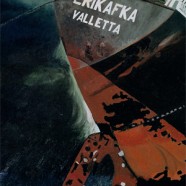Arctic: Keep it In My Backyard (KIMBY)
The Arctic Council is meeting this week in Kiruna Sweden an appropriately choice for the venue considering that mans’ impacts on the Arctic climate will be high on the agenda. Kiruna hosts the largest underground iron mine in the world where in response to ground deformations caused by mining, the city will be relocated over the coming years. Later this week at Kiruna the eight Arctic States (Russia, Finland, Denmark for Greenland, Sweden, Norway, Iceland, the U.S. and Canada) will sign a ‘Marine Oil Pollution Preparedness and Response’ agreement. The agreement aims to strengthen cooperation, coordination and mutual assistance on pollution preparedness and response in the Arctic in order to protect the marine environment from pollution by oil. Despite this noble promise the agreement does little more than reinforce existing international agreements.
Risks of Oil Spill in the North Sea
The death and disappearance of 11 sailors from the Baltic Ace car-carrier after colliding with the container ship Corvus J in the North Sea will be followed by an oil spill. After the tragic human casualties will follow environmental damage. The Baltic Ace wreck contains several tons of propulsion fuel oil and diesel oil. Each of the 1417 cars transported contain around 5 liters of fuel.
A similar accident that happened 10 years ago off Dunkirk had provoked oil sheens around the wreck, 2 days after the sinking of the Tricolor car-carrier. Two months later the assessment of the oiled birds was 5,200 in the north of France, 12,000 in Belgium, and 2,000 in the Netherlands. The coasts of Belgium, Flanders, Calaisis, Boulonnais, the Somme Bay and Normandy have been polluted by hydrocarbons released by the wreck. The nuclear plants in Penly in Normandy and in Gravelines in the north of France have been placed on alert because of the risk of hydrocarbons arriving in the cooling waters.
Today, it would be prudent if the Borssele nuclear plant in the Netherlands adopted the same procedures.
After 44 years of occupation, the Torrey Canyon liberates l’île d’Er
The BP tanker Torrey Canyon ran aground March 18, 1967 on reefs offshore Cornwall in Great Britain. It transported 120,000 of crude oil. Several Breton fishing ships were eyewitnesses to the crash course of the Torrey Canyon. The majority of the oil slick headed toward the French coast and has left its tracks between Cherbourg and l’île d’Yeu. Northern Brittany was very severely affected. The oil spill has been attacked with detergents. The Defense Ministry organized the battle, the waste being treated as an enemy.
Oil Spill in the North Sea
Early last week the Gannet Alpha platform situated approximately 180km east of Aberdeen, Scotland started leaking light crude oil into the North Sea. To date it is believed that some 218 tonnes (1,300 barrels) of oil has leaked from an 8 inch thick pipeline which joins Gannet E and F drilling fields. The leak was only confirmed a couple of days after it started by the operator Shell. The platform continues to operate but the sub-sea line between Gannet E and F has been isolated and the flow line depressurised which should reduce the leak flow.












